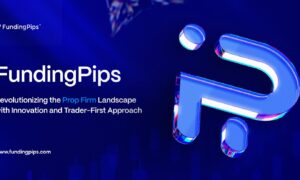The following is adapted from Navigate to the Lighthouse.
Great mariners look to the stars as a guide to chart their course through stormy waters. On their way to closing big deals, great business development (BD) people do the same.
I experienced this firsthand at Boku. My team and I saw a chasm approaching the company, so we pulled out the maps and compasses to guide us, looking for new land—for lighthouse deals with major companies that would be transformational for the company and lead to increased revenue and sustainable growth.
Our junior sales team spent about a month researching over 300 potential targets. We brainstormed every market—mobile games, music, magazines/periodicals, dating websites, mobile purchases that didn’t use in-app billing, e-commerce, TV, parking applications, highway toll booths, and more.
This research and analysis led us to meetings and deals with companies of all sorts. Because we were so persuasive and stubborn, we’d get meetings and some deals, but none worked out financially. All wasn’t lost, though. The trial-and-error partnerships provided us with technology and a stepping-stone to prepare us for the lighthouse accounts.
We learned from the partnerships, gained a step up against the competition, and achieved a market perception as the leading innovator. One of the most important things we learned: how crucial it was to implement a “lighthouse” framework. The framework guides you to unseen directions that you didn’t think were tenable. Just like a mariner looking to the stars, if you hold tight to the framework, even when the winds blow strong, you’ll make it through.
Categorize Your Deals
The most common scenario at the beginning of any BD project goes as follows: you think one of several transformational deals is possible yet still can’t figure out how to go about it. You’re at a loss when it comes to figuring out which accounts are the right ones for you to pursue. Then when you do, the questions linger.
Should you approach these targets immediately or wait? Can you get to the right person at the target account? Is it worth all the investment and time? Even if you close the deal, will they demand so much that it takes all of your resources?
These thoughts go round and round. But with the right framework, you can separate deals into categories that make sense for sales and BD functions. The lighthouse framework will help you to organize and analyze your pipeline. It serves as a map to your lighthouse that will help you determine product interest well before finding the right fit. Eventually, you’ll divide your deals into two or three categories so you know who will be chasing what.
Intrigued? Let’s get into the weeds.
Create a Spreadsheet
Step one: brainstorm. Brainstorming is one of my favorite activities in life—just paint a bunch of ideas on a wall with no wrong answer.
Similarly, create an exhaustive, theoretical pipeline for your company with ideas that range from the strangest deal to the dream deal, and then throw those potentials into a spreadsheet. This spreadsheet is the beginning of your search.
There’s nothing better for visualizing your options than a detailed spreadsheet, no matter how old-school it seems to make one. Your lighthouse analysis framework—the mechanism you use to keep track of all your potential lighthouse companies—will center on this one spreadsheet.
Think of the framework as a statistical equation. Can you figure out the most statistically significant variable? You’re trying to figure out where the market is going and what the most attractive opportunities are. If BD’s movement toward a lighthouse account is a journey, then this spreadsheet is your map. The better your calculations, the more efficiently you navigate.
Do a Vertical Analysis
To help you refine your spreadsheet, do a vertical analysis. Say you want to look at the possibility of grocery stores adopting your technologies and how big that opportunity may be. Then you’d need to do some work to figure out the size of the opportunities that you are targeting. Do your work by combing through 10-Ks and other financial information either online or through your network.
In this framework, you must ensure your data is correct. Get data from employers, past employees, customers, future customers, and whoever will give you an idea about the prospects. Good inputs equal good outputs.
Here are a few variables to consider when doing a vertical analysis:
- Size—Vertical market size by revenue broken down into revenue per prospect. Estimate the repeatability of selling the same product to many customers.
- Growth—The growth rate of the market.
- Market concentration—The more competition or fragmentation in a market, the more opportunities to sign a deal because those companies will adopt new technology to get a leg up on the others.
- Outsource versus insource—The likelihood that existing companies will develop the technology in-house.
- Rate of adoption—Have they adopted new technologies quickly before? What’s their impetus to have done so?
That analysis will give you an idea which verticals will fit your product.
Look at Company-Specific Variables
Next, do a market analysis. With the help of enterprise sales veteran Richard Purcell, we derived the following set of company-specific variables. First, the the target company’s interests:
- Revenue—The revenue potential for the target company as a function of the partnership. How much can they make from it?
- Strategic—Strategic interest in startup’s specific technology—i.e., how badly do they need new technologies to protect their golden egg?
- Adoption curve—Speed to adopt new technologies. (Is the industry fast-moving?)
- Preparation—Are they structured/prepared to do a deal? Do they have a qualified person in charge, like a chief digital officer for a brick-and-mortar chain?
- Requirements—Do they have lots of requirements to adopt new technology such as custom features or development? (More custom work = less appealing.)
Your company’s (the startup’s) interests:
- Revenue—What is the revenue potential for your company?
- Monetary cost—How much is the product development investment required to win the deal?
- Opportunity cost—How much time might be involved to pursue each target at the expense of a different opportunity?
- Contact—How strong is your contact? Were you introduced via a warm intro or a cold call?
- Strategic—How strategic is that company in terms of winning other deals?
There may be other variables, but these are a good start.
Quantify the Variables
Using a basic 1–5 rating will quantify the variables. Overall, your spreadsheet should have eight to 10 variables. Applying weighted average percentages per variable, you can roughly equate which deals may offer the highest expected value; it may be wise to spend time on these.
The goal of this analysis is to prioritize the deals that will most likely get you into the “money flow” and take a meat ax to the others. The money flow is where there is an imminent need for the product with a large potential user base. The money flow equation is simple: lots of money = high need + large and engaged existing user/employee base + price. Optimize those three variables, and that’s a lighthouse or transformational deal.
When the analysis is complete, you will have 10 or so potential lighthouse deals. When looking over your list of potential accounts, you will face the difficulty of comparing apples with oranges—the quantitative (the expected revenue and costs) with the qualitative variables (the impact on your future by having a big-name account).
In some cases, impactful is going to mean revenue. But that’s not always the case for a lighthouse: a big reason why lighthouse deals are key is because of what the deal means for the broader market. Some deals act as a signal to the market of your company’s leadership and technical ability and make the path to obtaining even bigger deals much clearer. Over time, you can fine-tune your equation to account for such factors and decide which ones are stepping-stones to the lighthouse.
Identify the Lighthouses
Earlier, I mentioned that we analyzed over 300 deals at Boku. Although we quickly realized what the transformational deals could be, we couldn’t foresee which ones were lighthouses. By pursuing stepping-stone deals that helped with product development or geographic expansion, we figured out which of the mega deals would move first and become the lighthouse.
That’s the power of this framework. As we found at Boku, it allows you to decide which deals are worth chasing, then which ones to invest in once you catch them—hopefully on the way to the lighthouse.
For more advice on how to land lighthouse deals, you can find Navigate to the Lighthouse on Amazon.
Kurt Davis is a technology executive with over two decades of experience building tech startups throughout Silicon Valley, Europe, and Asia. From 2008–2017, he worked with a startup called Boku, where he led global business development, focusing on deals with Apple, Microsoft, Spotify, Sony, and more. His first book, Finding Soul: From Silicon Valley to Africa, was born of his journey in 2017 working at entrepreneurship centers in sub-Saharan Africa.



































